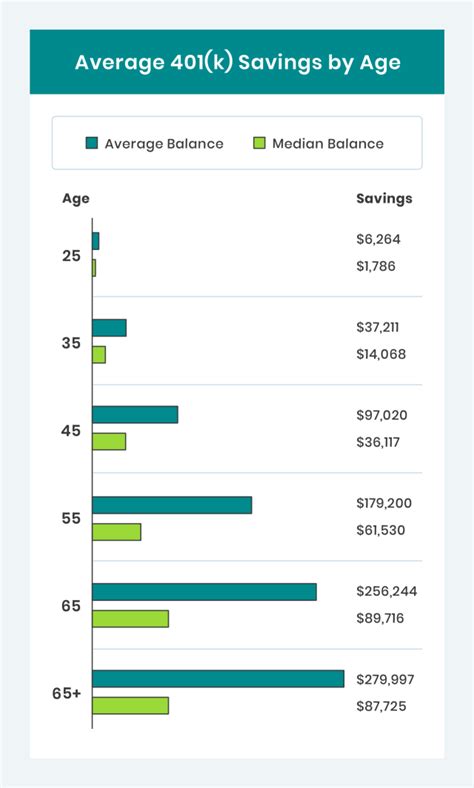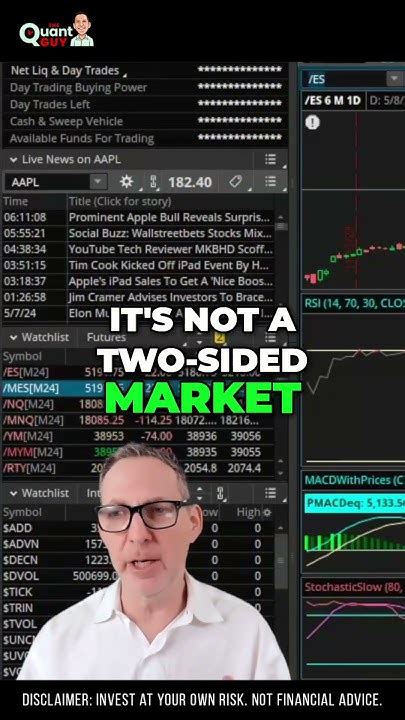
Investing just $500 a month in a low-cost index fund could potentially pave the way to millionaire status, a strategy championed by Warren Buffett, who advocates for its simplicity and long-term effectiveness, particularly for those without the time or expertise for active stock picking.
Warren Buffett, the legendary investor and CEO of Berkshire Hathaway, has long been a proponent of index fund investing, particularly for the average investor. He consistently advises individuals to invest in low-cost index funds that track the S&P 500, emphasizing that this passive investment strategy offers a high probability of achieving substantial returns over the long term without requiring extensive market knowledge or active management. His core philosophy centers on the idea that consistently investing in a diversified portfolio that mirrors the overall market performance is a reliable path to wealth accumulation.
Buffett’s advocacy for index funds stems from his belief that most investors, including professionals, struggle to consistently outperform the market. In his 2013 letter to Berkshire Hathaway shareholders, Buffett stated, “The goal of the non-professional should not be to pick winners – neither he nor his ‘helpers’ can do that – but should rather be to own a cross-section of businesses that in aggregate are bound to do well.” This highlights his conviction that diversification and market exposure are more effective than trying to select individual stocks.
The power of compounding, combined with the consistent growth of the overall market, is a key driver behind the potential for significant returns with index fund investing. By regularly investing a fixed amount, such as $500 a month, investors can take advantage of dollar-cost averaging, which involves purchasing more shares when prices are low and fewer shares when prices are high. This strategy helps to mitigate the risk of investing a lump sum at an unfavorable time and allows investors to gradually build their positions over time.
Furthermore, the low cost of index funds is a crucial factor in their appeal. Index funds typically have expense ratios significantly lower than actively managed mutual funds, meaning that investors retain more of their returns. Over the long term, these cost savings can compound significantly, further enhancing the overall investment performance. As Buffett has emphasized, minimizing expenses is essential to maximizing returns.
The S&P 500 index, which tracks the performance of 500 of the largest publicly traded companies in the United States, is a common benchmark for index fund investing. By investing in an S&P 500 index fund, investors gain exposure to a broad range of industries and companies, providing diversification and reducing the risk associated with investing in individual stocks. The historical performance of the S&P 500 has demonstrated its ability to generate substantial returns over the long term, making it an attractive option for long-term investors.
To illustrate the potential of investing $500 a month in an S&P 500 index fund, consider a hypothetical scenario based on historical market returns. Over the past few decades, the S&P 500 has averaged annual returns of around 10%, although past performance is not indicative of future results. Assuming a consistent investment of $500 per month and an average annual return of 10%, it would take approximately 30 years to accumulate $1 million. This calculation does not account for inflation or taxes, but it demonstrates the potential power of consistent investing and compounding over time.
Moreover, the accessibility of index fund investing has made it easier than ever for individuals to start investing. Many brokerage firms offer low-cost or even zero-fee index funds, making it affordable for investors with limited capital to begin building their portfolios. Online platforms and robo-advisors provide additional tools and resources to help investors select appropriate index funds and manage their investments.
Buffett’s endorsement of index fund investing extends beyond individual investors. He has also instructed the trustee of his estate to invest 90% of his wife’s inheritance in a low-cost S&P 500 index fund and 10% in short-term government bonds. This allocation reflects his belief that even for individuals with substantial wealth, a simple and diversified approach to investing is the most effective way to preserve and grow capital over the long term.
While index fund investing offers numerous advantages, it is essential to recognize its limitations. Index funds are designed to track the performance of a specific index, which means that they will not outperform the market. During periods of market downturn, index funds will also decline in value, reflecting the overall market performance. However, the long-term track record of the S&P 500 and other major market indexes suggests that these downturns are typically followed by periods of recovery and growth.
Furthermore, investors should carefully consider their individual circumstances and risk tolerance before investing in index funds. It is important to have a long-term investment horizon and to avoid making impulsive decisions based on short-term market fluctuations. Consulting with a qualified financial advisor can help investors determine the appropriate asset allocation and investment strategy based on their specific needs and goals.
In conclusion, Warren Buffett’s advocacy for index fund investing underscores the importance of simplicity, diversification, and long-term perspective in achieving financial success. By consistently investing in low-cost index funds that track the overall market, individuals can increase their chances of accumulating substantial wealth over time, regardless of their level of investment expertise. The combination of dollar-cost averaging, low expenses, and the power of compounding makes index fund investing a compelling strategy for both novice and experienced investors alike. His straightforward advice offers a potential pathway for anyone willing to commit to a long-term investment strategy. The simplicity of the approach, coupled with the historical performance of the S&P 500, makes it a compelling option for those seeking financial security and growth.
The strategy emphasizes the power of compounding, where returns generate further returns over time. This, combined with the consistent growth of the overall market, is a key driver behind the potential for significant wealth accumulation. By investing regularly, investors can also take advantage of dollar-cost averaging, buying more shares when prices are low and fewer when they are high, mitigating risk.
Moreover, the low cost of index funds, with expense ratios significantly lower than actively managed funds, ensures investors retain more of their returns, further enhancing investment performance. The S&P 500 index, tracking 500 of the largest U.S. companies, offers broad diversification, reducing risk compared to individual stock picking.
While index funds offer a viable path to wealth, it’s crucial to understand their limitations. They won’t outperform the market, and during downturns, they will decline in value. However, the long-term historical performance of the S&P 500 suggests that recovery and growth typically follow market corrections.
Individual circumstances and risk tolerance should also be considered. A long-term investment horizon is essential, avoiding impulsive decisions based on short-term market fluctuations. Consulting a financial advisor can help determine the appropriate asset allocation and investment strategy.
Buffett’s consistent message highlights the potential for ordinary individuals to achieve extraordinary results through disciplined, long-term investing in low-cost index funds. It emphasizes that financial success doesn’t require complex strategies or market expertise but rather a commitment to a simple and effective approach. His continued advocacy serves as a powerful reminder that even with a modest monthly investment, the path to financial independence is within reach for those willing to embrace the principles of index fund investing.
He often points out that trying to “beat the market” is a difficult and often fruitless endeavor, even for experienced investors. This is why he consistently recommends index funds, which simply aim to mirror the performance of the overall market. By investing in an index fund, individuals can avoid the pressure of trying to pick individual stocks and instead focus on the long-term growth of the economy.
Buffett’s advice is particularly relevant in today’s market environment, where volatility and uncertainty are prevalent. Many investors are tempted to make frequent changes to their portfolios in response to market fluctuations, but Buffett’s approach emphasizes the importance of staying the course and avoiding emotional decision-making. By sticking to a consistent investment strategy, individuals can reduce their risk and increase their chances of achieving their financial goals.
Moreover, the ease of access to index funds has made them an increasingly popular choice for investors of all ages and income levels. With the rise of online brokerage platforms and robo-advisors, it is now easier than ever to open an account and start investing in index funds with a small amount of money. This accessibility has democratized investing, allowing more people to participate in the long-term growth of the market.
However, it is important to note that index fund investing is not a “get-rich-quick” scheme. It requires patience, discipline, and a long-term perspective. Investors should be prepared to weather market downturns and avoid the temptation to sell their investments during periods of volatility. By staying focused on their long-term goals and adhering to a consistent investment strategy, individuals can significantly increase their chances of achieving financial success.
The beauty of Buffett’s strategy lies in its simplicity. It doesn’t require complex financial knowledge or the ability to predict market movements. Instead, it relies on the power of compounding and the long-term growth of the economy. By consistently investing in low-cost index funds, individuals can harness these forces to build wealth over time.
In addition to his advocacy for index funds, Buffett also emphasizes the importance of financial literacy and responsible financial planning. He encourages individuals to educate themselves about investing and to make informed decisions based on their own circumstances and goals. By taking control of their finances and making smart investment choices, individuals can empower themselves to achieve financial independence and security.
Buffett’s advice is not just for the wealthy or the financially savvy. It is a practical and accessible strategy that anyone can implement, regardless of their background or experience. By following his simple and effective approach, individuals can take control of their financial futures and work towards achieving their long-term goals.
Furthermore, the rise of environmental, social, and governance (ESG) investing has also impacted the index fund landscape. Investors increasingly seek to align their investments with their values by investing in companies that demonstrate strong ESG performance. This has led to the development of ESG-focused index funds, which track indexes that screen companies based on their ESG criteria. These funds offer investors the opportunity to invest in a diversified portfolio of companies that are committed to sustainability and social responsibility.
However, it is important to note that ESG investing also has its limitations. There is no universally agreed-upon definition of ESG, and different ESG rating agencies may use different criteria to assess companies’ ESG performance. This can lead to inconsistencies in ESG ratings and make it difficult for investors to compare different ESG funds.
Despite these limitations, ESG investing is becoming increasingly popular, and it is likely to continue to shape the index fund landscape in the years to come. As investors become more aware of the social and environmental impact of their investments, they are likely to demand more ESG-focused investment options.
In conclusion, Warren Buffett’s advocacy for index fund investing highlights the importance of simplicity, diversification, and long-term perspective in achieving financial success. By consistently investing in low-cost index funds that track the overall market, individuals can increase their chances of accumulating substantial wealth over time. The accessibility of index funds, combined with the power of compounding, makes them a compelling strategy for both novice and experienced investors alike.
Frequently Asked Questions (FAQs)
1. What exactly is an index fund and how does it work?
An index fund is a type of mutual fund or exchange-traded fund (ETF) designed to track the performance of a specific market index, such as the S&P 500. Instead of having fund managers actively select stocks, an index fund simply holds the same stocks as the index it tracks, in the same proportions. This passive approach aims to replicate the index’s returns, providing broad market exposure and diversification at a low cost. The fund’s performance will closely mirror the performance of the underlying index. For example, if the S&P 500 rises by 10%, the S&P 500 index fund is expected to rise by approximately 10%, minus the fund’s expense ratio. Index funds are typically favored for their simplicity, transparency, and low fees, making them an attractive option for long-term investors seeking market-average returns. The value of an index fund fluctuates along with the stocks in the index it is tracking.
2. Why does Warren Buffett recommend investing in index funds over individual stocks or actively managed funds?
Warren Buffett recommends index funds primarily for their simplicity, low cost, and diversification benefits, particularly for non-professional investors. He believes that most investors, including professional money managers, struggle to consistently outperform the market over the long term. As Buffett stated in his 2013 letter to Berkshire Hathaway shareholders, “The goal of the non-professional should not be to pick winners – neither he nor his ‘helpers’ can do that – but should rather be to own a cross-section of businesses that in aggregate are bound to do well.”
Investing in individual stocks requires extensive research, analysis, and ongoing monitoring, which can be time-consuming and challenging. Actively managed funds, on the other hand, come with higher fees and often fail to beat the market average after accounting for those fees. Index funds offer a cost-effective way to gain broad market exposure, reduce risk through diversification, and achieve returns that closely track the overall market performance. Buffett’s advice underscores the importance of a passive, long-term investment strategy that emphasizes simplicity and minimizes expenses.
3. How much money would someone potentially accumulate by investing $500 per month in an S&P 500 index fund over a long period, say 30 years?
The amount of money accumulated by investing $500 per month in an S&P 500 index fund over 30 years depends on the average annual return of the index fund. Historical data shows that the S&P 500 has averaged around 10% annual returns over long periods, although past performance is not indicative of future results.
Using a compound interest calculator with a monthly investment of $500, an initial investment of $0, and an annual return of 10% over 30 years, the estimated accumulated amount would be approximately $1,177,878. This calculation assumes that the returns are reinvested and that there are no taxes or fees.
It’s important to remember that investment returns are not guaranteed and can fluctuate significantly. Market volatility, economic conditions, and other factors can impact the performance of the S&P 500. Therefore, the actual amount accumulated could be higher or lower than the estimated figure. Consulting with a financial advisor can help assess individual risk tolerance and develop a suitable investment strategy.
4. What are the potential risks associated with investing in index funds, and how can investors mitigate them?
While index funds offer many advantages, they also carry certain risks that investors should be aware of:
- Market Risk: Index funds are subject to market risk, meaning their value can decline along with the overall market. During periods of economic downturn or market volatility, index funds can experience significant losses.
- Tracking Error: Tracking error refers to the difference between the performance of the index fund and the performance of the underlying index. While index funds aim to replicate the index’s returns, they may not perfectly match its performance due to factors such as expenses, fund management strategies, and sampling techniques.
- Concentration Risk: Some indexes, such as the S&P 500, may be heavily weighted towards a few large companies or sectors. This can lead to concentration risk, where the fund’s performance is significantly impacted by the performance of a small number of holdings.
- Inflation Risk: Inflation can erode the real value of investment returns over time. If the rate of inflation exceeds the return on the index fund, investors may not achieve their financial goals.
To mitigate these risks, investors can:
- Diversify: While index funds provide broad market exposure, investors can further diversify their portfolios by investing in different types of index funds, such as those tracking international markets or specific sectors.
- Invest for the Long Term: Index fund investing is best suited for long-term investors who can ride out market fluctuations and benefit from the power of compounding.
- Rebalance Regularly: Rebalancing involves periodically adjusting the portfolio to maintain the desired asset allocation. This can help to control risk and ensure that the portfolio remains aligned with the investor’s goals.
- Consider Dollar-Cost Averaging: Dollar-cost averaging involves investing a fixed amount of money at regular intervals, regardless of market conditions. This strategy can help to reduce the risk of investing a lump sum at an unfavorable time.
5. Are there different types of index funds available, and which one is most suitable for a beginner investor following Buffett’s advice?
Yes, there are several types of index funds available, each tracking different market segments or investment strategies. Some common types include:
- S&P 500 Index Funds: These funds track the performance of the S&P 500 index, which represents 500 of the largest publicly traded companies in the United States.
- Total Stock Market Index Funds: These funds track the performance of the entire U.S. stock market, including small-cap, mid-cap, and large-cap companies.
- International Stock Market Index Funds: These funds track the performance of stock markets in developed and emerging countries outside the United States.
- Bond Index Funds: These funds track the performance of various bond market indexes, such as the Bloomberg Barclays U.S. Aggregate Bond Index.
- Sector Index Funds: These funds track the performance of specific sectors of the economy, such as technology, healthcare, or energy.
For a beginner investor following Buffett’s advice, an S&P 500 index fund or a total stock market index fund is generally the most suitable option. These funds provide broad diversification across the U.S. stock market, have low expense ratios, and are easy to understand. The S&P 500 index fund is a good starting point, while the total stock market index fund offers even broader diversification by including smaller companies. Either option aligns with Buffett’s philosophy of owning a cross-section of businesses that are bound to do well over the long term.









